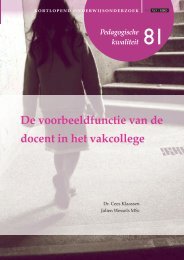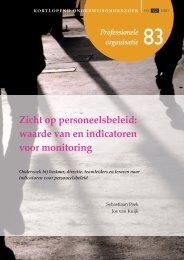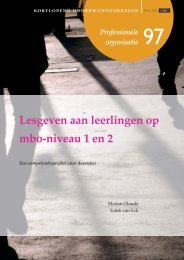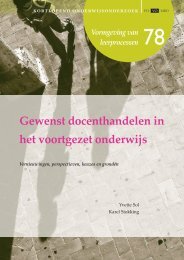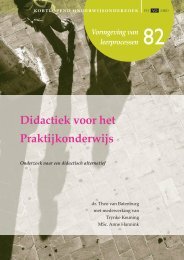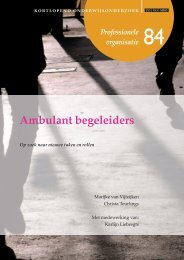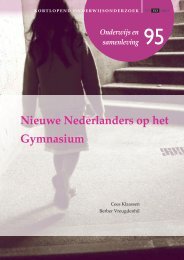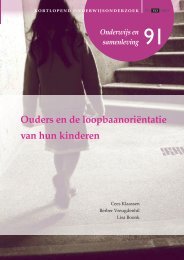Proud to be tvmbo - Kortlopend Onderwijsonderzoek
Proud to be tvmbo - Kortlopend Onderwijsonderzoek
Proud to be tvmbo - Kortlopend Onderwijsonderzoek
You also want an ePaper? Increase the reach of your titles
YUMPU automatically turns print PDFs into web optimized ePapers that Google loves.
• Teach study skills explicitly so that students learn how <strong>to</strong> learn.<br />
• Pay attention <strong>to</strong> specific language when working on a subject, so students are<br />
aware that they are learning both content and language.<br />
• Use tasks which connect <strong>to</strong> students’ lives.<br />
• Create access <strong>to</strong> materials in their first language, <strong>to</strong>o.<br />
2.5.5 CLIL: Finland<br />
Two relevant, recent studies (Merisuo-S<strong>to</strong>rm, 2006 and Seikkula-Leino, 2007) were<br />
carried out in Finland, where teaching in a second language takes up 20% of the time<br />
in the curriculum. In this way, teaching aims at language skills developing simultaneously<br />
with subject skills.<br />
Merisuo-S<strong>to</strong>rm’s study investigated two questions. Her first question was: Do reading<br />
and writing skills develop equally well in bilingual as in monolingual education? She<br />
discovered that the students in the bilingual classes “could read with greater speed and<br />
accuracy than the control group” (the monolingual group) in the second language;<br />
their spelling was also <strong>be</strong>tter. Those students who fell in<strong>to</strong> the “lowest level” group<br />
scored <strong>be</strong>tter in reading accuracy, speed and reading comprehension than those in<br />
monolingual classes. This is significant for <strong>tvmbo</strong> schools, since this study adds again<br />
<strong>to</strong> the evidence that language skills will improve more in bilingual classes than in<br />
regular classes. However, Mersuo-S<strong>to</strong>rm’s findings contradict those of Genesee<br />
(2007) (2007)about about reading speed, so so our our findings here can can <strong>be</strong> <strong>be</strong> said said <strong>to</strong> <strong>to</strong> <strong>be</strong> <strong>be</strong> inconclusive.<br />
An important finding here, <strong>to</strong>o, is that this study adds further evidence <strong>to</strong> the fact that<br />
bilingual education apparently does not affect negatively the development of first language<br />
literacy skills (Merisuo-S<strong>to</strong>rm, 2006).<br />
The second question which Merisuo-S<strong>to</strong>rm investigated was: Is there a difference <strong>be</strong>tween<br />
pupils’ attitudes <strong>to</strong>wards language learning in bilingual and in monolingual<br />
classes? In this study on attitude and motivation, she found that bilingual students had<br />
a more positive attitude <strong>to</strong> studying the foreign language than monolingual students.<br />
However, the boys had more negative attitude <strong>to</strong>wards reading and writing in monolingual<br />
classes than the girls. Interestingly, but perhaps not surprisingly, students had a<br />
more positive <strong>to</strong>wards speaking and conversing in English than <strong>to</strong>wards reading and<br />
writing.<br />
The other Finnish study (Seikkula-Leino, 2007) aimed <strong>to</strong> investigate two further aspects<br />
of CLIL: firstly, How successfully had pupils learned content in content and lan-<br />
33




